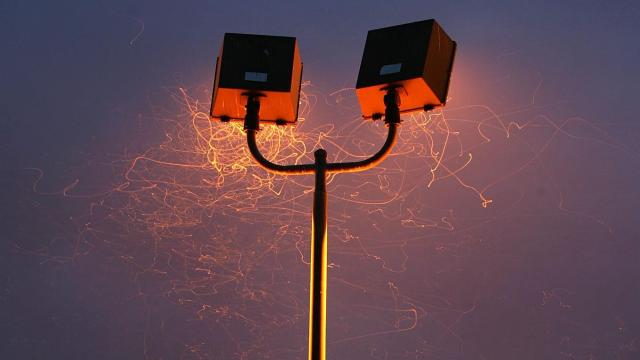Humans have used light to trap insects for at least 2,000 years (thanks, Romans). Now, a team of researchers says they know why the animals are apparently drawn to the light—and it’s not a happy tale.
The modern bug zapper has been around for about a century. It has killed countless mosquitos, dragonflies, moths, you name it. But, based on new data, scientists report that the insects aren’t attracted to the light, really; rather, they use light sources to orient flight and artificial disorients them, often to fatal ends. The team’s research is published this week in Nature Communications.
“This has been a prehistorical question. In the earliest writings, people were noticing this around fire,” said Jamie Theobald, a biologist at Florida International University and co-author of the study, in a Florida Museum release. “It turns out all our speculations about why it happens have been wrong.”
Like a moth to a flame—or so the saying goes—the researchers attended to the question at hand. In a Costa Rican cloud forest, the team turned on an artificial light and made field recordings of the insects that showed up. They observed the animals “orbiting” (making arcs around the ultraviolet light source), “stalling” (flying upwards and slowing down, but not flipping), and “inverting” (fully flipping) in the presence of the light.
The group combined their field study with lab experiments. They recorded the motion of diurnal dragonfly species (the common darter, S. striolatum, and migrant hawker, A. mixta), and nocturnal moths (the yellow underwing, N. pronuba and N. fimbriata, and Lorquin’s atlas moth, A. lorquinii.) They recorded 538 flight trajectories between the four species.
The results were straightforward. The insects were not observed steering into the light. Rather, they generally turned their dorsum (their “backs”) toward the light; they were steering by it.
“Under natural sky light, tilting the dorsum towards the brightest visual hemisphere helps maintain proper flight attitude and control,” the team wrote. “Near artificial sources, however, this highly conserved dorsal-light-response can produce continuous steering around the light and trap an insect.”
Thus, the “seemingly erratic” flying patterns are really just the insects’ failed attempts to make sense of the artificial light. There’s a dark irony to the bug zapper: in their attempts to fly by its guidance, insects instead meet their demise.
